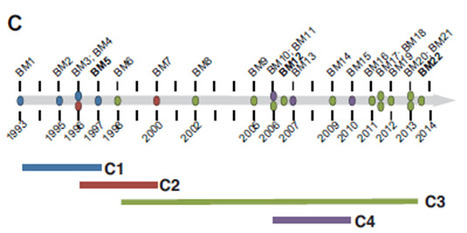
Within the cystic fibrosis (CF) lung, bacteria experience high-osmolarity conditions due to an ion unbalance resulting from defects in CF transmembrane conductance regulator (CFTR) protein activity in epithelial cells. Understanding how bacterial CF pathogens thrive in this environment might help the development of new therapeutic interventions to prevent chronic respiratory infections. In a recent publication in Journal of Bacteriology, researchers from BSRG-iBB led by Leonilde M. Moreira, in collaboration with Dr. Vaughn Cooper from University of Pittsburgh, USA, and Dr. Jörg Becker from Instituto Gulbenkian de Ciência, provide evidence that mutations in OmpR experience positive selection during the adaptation of Burkholderia to chronic infections of the CF airway, and these selective forces can be recapitulated in the laboratory. Characterization of OmpR shows that it is a major regulator of many traits related to cell envelope composition and central metabolism, in which loss-of-function mutants enable greater tolerance and growth under stress conditions but are costly for fitness under other conditions.



 Your new post is loading...
Your new post is loading...






